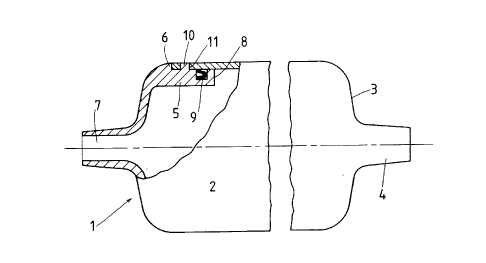Some of the information on this Web page has been provided by external sources. The Government of Canada is not responsible for the accuracy, reliability or currency of the information supplied by external sources. Users wishing to rely upon this information should consult directly with the source of the information. Content provided by external sources is not subject to official languages, privacy and accessibility requirements.
Any discrepancies in the text and image of the Claims and Abstract are due to differing posting times. Text of the Claims and Abstract are posted:
| (12) Patent: | (11) CA 2013551 |
|---|---|
| (54) English Title: | REDUCED PRESSURE SEALS AND DEBRIS TRAP INCLUDING SUCH SEALS |
| (54) French Title: | JOINT D'ETANCHEITE POUR BASSE PRESSION ET CAPTEUR GARNI DUDIT JOINT |
| Status: | Deemed expired |
| (52) Canadian Patent Classification (CPC): |
|
|---|---|
| (51) International Patent Classification (IPC): |
|
| (72) Inventors : |
|
| (73) Owners : |
|
| (71) Applicants : | |
| (74) Agent: | NORTON ROSE FULBRIGHT CANADA LLP/S.E.N.C.R.L., S.R.L. |
| (74) Associate agent: | |
| (45) Issued: | 1998-06-23 |
| (22) Filed Date: | 1990-03-30 |
| (41) Open to Public Inspection: | 1990-09-30 |
| Examination requested: | 1991-12-19 |
| Availability of licence: | N/A |
| (25) Language of filing: | English |
| Patent Cooperation Treaty (PCT): | No |
|---|
| (30) Application Priority Data: | ||||||||||||
|---|---|---|---|---|---|---|---|---|---|---|---|---|
|
This invention is concerned with the sealing of
component parts of equipment providing a path for
liquid therethrough under reduced pressure and to the
inclusion of a lip seal between the components with the
lips directed outwardly of the joint between the
components. More particularly the invention is
concerned with the use of lip seals referred to in
debris traps included in domestic swimming pool
filtration equipment.
La présente invention porte sur l'étanchéité de pièces d'équipement donnant passage à un liquide sous pression réduite et sur l'incorporation d'une lèvre d'étanchéité entre les pièces, les lèvres étant dirigées vers l'extérieur du joint entre lesdites pièces. L'invention traite en particulier de l'utilisation de lèvres d'étanchéité dans les pièges à débris faisant partie de l'équipement de filtration des piscines familiales.
Note: Claims are shown in the official language in which they were submitted.
Note: Descriptions are shown in the official language in which they were submitted.

For a clearer understanding of the status of the application/patent presented on this page, the site Disclaimer , as well as the definitions for Patent , Administrative Status , Maintenance Fee and Payment History should be consulted.
| Title | Date |
|---|---|
| Forecasted Issue Date | 1998-06-23 |
| (22) Filed | 1990-03-30 |
| (41) Open to Public Inspection | 1990-09-30 |
| Examination Requested | 1991-12-19 |
| (45) Issued | 1998-06-23 |
| Deemed Expired | 2003-03-31 |
There is no abandonment history.
Note: Records showing the ownership history in alphabetical order.
| Current Owners on Record |
|---|
| ZODIAC POOL CARE, INC. |
| Past Owners on Record |
|---|
| BARACUDA INTERNATIONAL, INC. |
| HELGE JOCHEN SCHNEIDER |
| KALLENBACH, DIETER H. F. |
| ZARINA HOLDING C.V. |